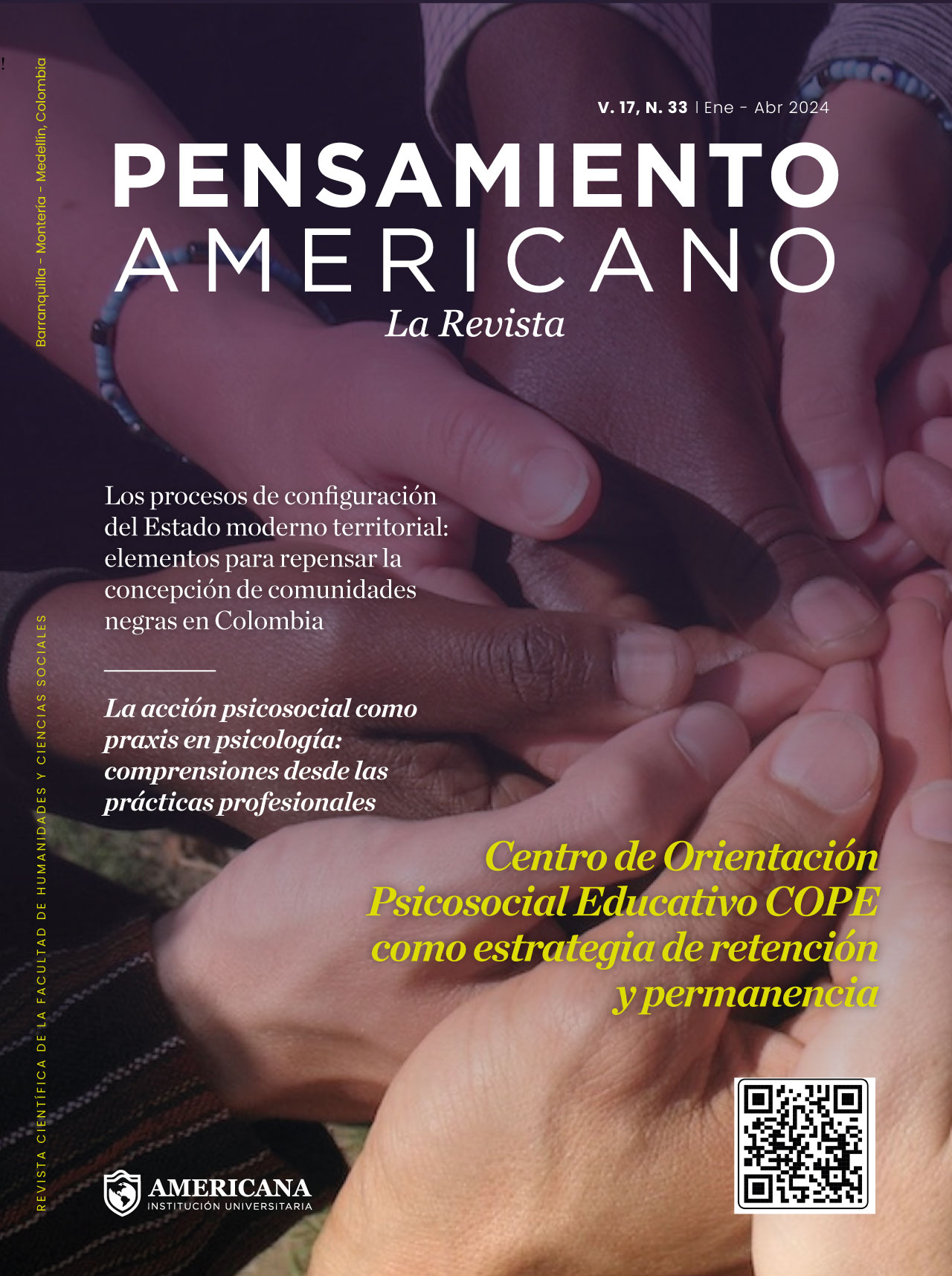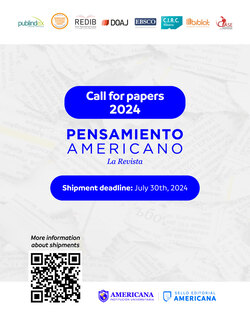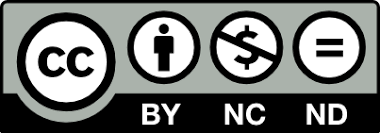Legal gaps in the peruvian corporate network: Negative practices in boards of directors
DOI:
https://doi.org/10.21803/penamer.17.33.481Keywords:
corporate governance, collusion, corporate network, interlocking directorates, legal gapsAbstract
Introduction: The networks generated among firms’ boards through their shared directors can cause conflicts of interests, generating potential negative business practices. Objective: This paper identifies the risks of negative managerial practices driven by the
absence of proper regulations to control the formation and behavior of interlocking directorates in Peru. Methodology: It discusses the interlocking directorates’ literature, and reviews current Peruvian regulation. Results: In addition to the identified risks, it
emphasizes in the expectations of a proper behavior of directors as a decision of their own, due to the nature of their role. Conclusions: This interdisciplinary study between management and law evidences gaps in Peruvian regulation for the operation of interlocking directorates and suggests the development of future empirical research in Latin America towards the prevention of these negative corporate practices.
Downloads
References
Aldana, N. (2005). Las Facultades del Directorio. El derecho registral. En la jurisprudencia comentada. Gaceta Jurídica: Lima.
Bizjak, J., Lemmon, M. & Whitby, R. (2009). Option Backdating and Board Interlocks. The Review of Financial Studies, 22(11), 4821-4847. https://doi.org/10.1093/rfs/hhn120
Boyd, B. (1990). Corporate Linkages and Organizational Environment: A Test of the Resource Dependence Model. Strategic Management Journal, 11(6), 419-430. https://doi.org/10.1002/smj.4250110602
Cai, Y. & Sevilir, M. (2012). Board Connections and M&A Transactions”. Journal of Financial Economics, 103, 327-349. https://doi.org/10.1016/j.jfineco.2011.05.017
Carroll, W. K., Graham, N., Lang, M. K., Yunker, Z. & McCartney, K. D. (2018). The Corporate Elite and the Architecture of Climate Change Denial: A Network Analysis of Carbon Capital’s Reach into Civil Society”. Canadian Review of Sociology, 55(3), 425-450. https://doi.org/10.1111/cars.12211
Chiu, P., Hong Teoh, S. & Tian, F. (2013). Board Interlocks and Earnings Management Contagion”. American Accounting Association, 88(3), 915-944. https://doi.org/10.2308/accr-50369
Coloma, G. (2003). Defensa de la competencia. Análisis Económico Comparado. Editorial Ciudad Argentina: Buenos Aires. Recuperado de https://ucema.edu.ar/~gcoloma/LibroDefcomp.pdf
Cordova, M. (2018). The Evolution of Interlocking Directorates Studies-A Global Trend Perspective. AD-minister, 33, 135-165. https://doi.org/10.17230/ad-minister.33.7
Cordova, M. (2019). That is OK, he is a good fellow: Introducing the outcomes dichotomy for corporate networks of interlocking directorates”. Revista Academia & Negocios, 5(1), 123-134. https://papers.ssrn.com/sol3/papers.cfm?abstract_id=3432045
David, T. & Westerhuis, G. (2014). Comparing Corporate Networks in a Long-Term Perspective. David, T. (Ed.) & Westerhuis, G. (Ed.), The Power of Corporate Networks: A Comparative and Historical Perspective, Routledge, New York, NY, pp. 1-28. https://dx.doi.org/10.4324/9781315850849
Davis, G.F. (1996). The Significance of Board Interlocks for Corporate Governance. Corporate Governance: an International Review, 4(3), 154-159. https://doi.org/10.1111/j.1467-8683.1996.tb00144.x
Elías-Laroza, E. (2000). Derecho Societario peruano. La Ley General de Sociedades del Perú: Obra completa. Trujillo: Editorial Normas Legales.
Fich, E. M. & Shivdasani, A. (2007). Financial fraud, director reputation, and shareholder wealth”. Journal of Financial Economics, 86(2), 306-336. https://doi.org/10.1016/j.jfineco.2006.05.012
Gagliardo, M. (1986). El directorio en la sociedad anónima. Buenos Aires: Abeledo-Perrot.
García Carpio, R. & Pérez-Reyes R. (2012). Documento de Trabajo N° 336: Modelos de Oligopolios de Productos Homogéneos y Viabilidad de Acuerdos Horizontales. Departamento de Economía de la Pontificia Universidad Católica del Perú: Lima. p, 84. http://departamento.pucp.edu.pe/economia/documento/modelos-de-oligopolios-de-productos-homogeneos-y-viabilidad-de-acuerdos-horizontales/
Hambrick, D. (2007). Upper Echelons Theory: An Update”. Academy of Management, 32(2), 334-343. https://doi.org/10.2307/20159303
Hambrick D. & Mason, P. (1984). Upper Echelons: The Organization as a Reflection of Its Top Managers”. Academy of Management Review, 9(2), 193-206. https://doi.org/10.2307/258434
Harvey Narváez J. ., & Hernández E. L. . (2019). Diferencias intergeneracionales en el Sentido de Comunidad entre un grupo de niños y adultos mayores de la parcela de Cujacal en la ciudad de San Juan de Pasto–Colombia. Pensamiento Americano, 12(23). https://doi.org/10.21803/pensam.v12i22.253
Haunschild, P. & Beckman, C. (1998). When Do Interlocks Matter? Alternate Sources of Information and Interlock Influence”. Administrative Science Quarterly, 43(4), 815-844. https://doi.org/10.2307/2393617
Hoskisson, R., Eden, L., Ming Lau, C. & Wright, M. (2000). Strategy in Emerging Economies”. Academy of Management Journal, 43(3), 249-267. https://doi.org/10.2307/1556394
Martorell, E.E. (1990). Los Directores de Sociedades Anónimas. Buenos Aires: Ediciones Depalma.
Mizruchi, M. (1996). What Do Interlocks Do? An Analysis, Critique, and Assesment of Research on Interlocking Directorates”. Annual Review of Sociology, 22, 271-298. https://doi.org/10.1146/annurev.soc.22.1.271
Mizruchi, M. & Brewster Stearns, L. (1988). A Longitudinal Study of the Formation of Interlocking Directorates”. Administrative Science Quarterly, 33(2), 194-210. https://doi.org/10.2307/2393055
Quintana, E. (2013). Análisis de las funciones del Indecopi a la luz de las decisiones de sus órganos resolutivos. Libre Competencia. Colección por el vigésimo aniversario de Indecopi. Vol. 4. Indecopi: Lima. Recuperado de https://repositorio.indecopi.gob.pe/bitstream/handle/11724/5564/libre_competencia.pdf?sequence=1&isAllowed=y
Rubio-Correa, M. (2015). Para conocer la Constitución de 1993. Quinta Edición. Lima: Fondo Editorial PUCP.
Salvaj, E. (2013). Cohesión y Homogeneidad. Evolución de la red de directorios de las grandes empresas en Chile, 1969-2005”. Ossandón, J. (Ed.) & Tironi, E. (Ed.), Adaptación: la empresa chilena después de Friedman, Ediciones Universidad Diego Portales, Santiago, Chile, pp. 55-84. https://doi.org/10.13140/2.1.3555.0081
Sandoval Reyes, R. ., Roncallo Pichón, A. J., Barrientos Pérez, E. ., & Landazury Villalba, L. F. (2020). Incremento en la base gravable del impuesto predial en el distrito de Barranquilla en 2018. Ad-Gnosis, 9(9), 59–68. https://doi.org/10.21803/adgnosis.9.9.437
Semana Económica (2017). Directorios peruanos menos avanzados. No SE 1592, pp. 34.
Shipilov, A., Greve, H. & Rowley, T. (2009). When de Interlocks Matter? Institutional Logics and the Diffusion of Multiple Corporate Governance Practices”. The Academy of Management Journal, 53(4), 846-864. https://doi.org/10.5465/AMJ.2010.52814614
Shropshire, C. (2010). The Role of the Interlocking Director and Board Receptivity in the Diffusion of Practices”. Academy of Management Review, 35(2), 246-264. https://doi.org/10.5465/AMR.2010.48463333
SMV (2013). Fecha de última visita 15/12/2019. Recuperado de http://www.smv.gob.pe/uploads/codbgc2013%20_2_.pdf
Useem, M. (1984). The Inner Circle. Large Corporations and the Rise of Business Political Activity in the U.S. and U.K. Oxford: Oxford University Press.
Vassolo, R., De Castro, J. & Gómez-Mejía, L. (2011). Managing in Latin America: Common Issues and a Research Agenda”. Academy of Management Perspectives, 25(4), 22-36. https://doi.org/10.5465/amp.2011.0129
Vergara, A. (2018). Ciudadanos sin República. De la precariedad institucional al descalabro político. 2nd ed. Lima: Editorial Planeta Perú S.A.
Windolf, P. (2009). Coordination and Control in Corporate Networks: United States and Germany in Comparison, 1896-1938”. European Sociological Review, 25(4), 443-457. https://doi.org/10.1093/esr/jcn059
Winslow, T. (2004). Derecho y Política de la Competencia en Perú: Examen Inter Pares. OCDE. Fecha de última visita 27/07/2017. Recuperado de https://www.oecd.org/daf/competition/DerechoPol%C3%ADticaPeru.pdf
Zajac, E. & Westphal, J. (1996). Director Reputation, CEO-Board Power, and the Dynamics of Board Interlocks”. Administrative Science Quarterly, 41(3), 507-529. https://doi.org/10.2307/2393940
Downloads
Published
Versions
- 2024-05-16 (3)
- 2024-06-24 (2)
- 2024-05-16 (1)
Issue
Section
License
Copyright (c) 2024 Pensamiento Americano

This work is licensed under a Creative Commons Attribution-NonCommercial-NoDerivatives 4.0 International License.
The author or authors of an article accepted for publication in the Journal Pensamiento Americano will transfer all of the patrimonial rights to the American University Corporation free of charge, within which are included: the right to edit, publish, reproduce and distribute both print media as digital, in addition to include in article in international indexes and / or databases, likewise, the Editorial Seal is authorized to use the images, tables and / or any graphic material presented in the article for the design of covers or posters from the same magazine. By assuming the patrimonial rights of the article, it may not be partially or totally reproduced in any printed or digital media without its express permission.
AUTHORITY ASPECTS
For the Pensamiento Americano Journal, all the authors of an article have made substantial contributions to the research and the manuscript, and they share the responsibility when the article presents errors, fraud in some way or violations of copyright.
After submitting an article, the journal does not accept the addition, deletion or change in the order of the authors, in addition we reserve the right to release the article when it has been submitted to the journal and under no circumstances will American Thought accept the article. withdrawal of an article during any phase of the editorial process






